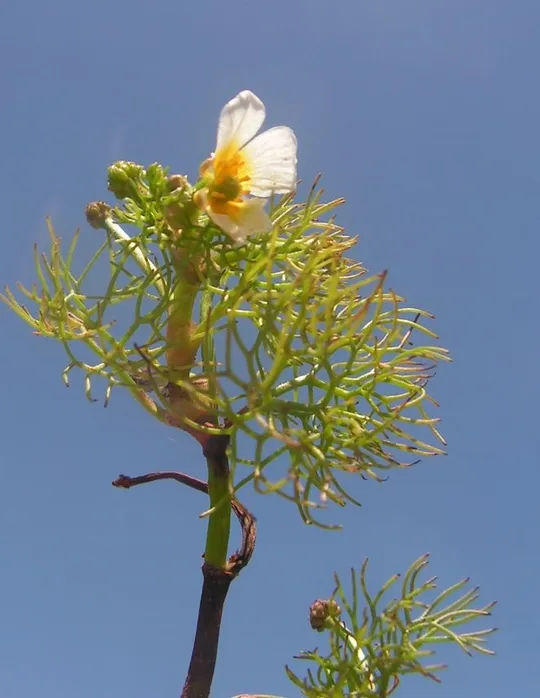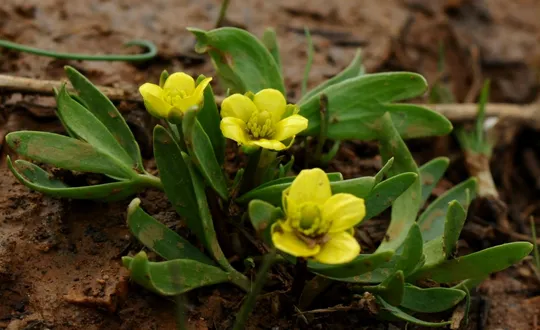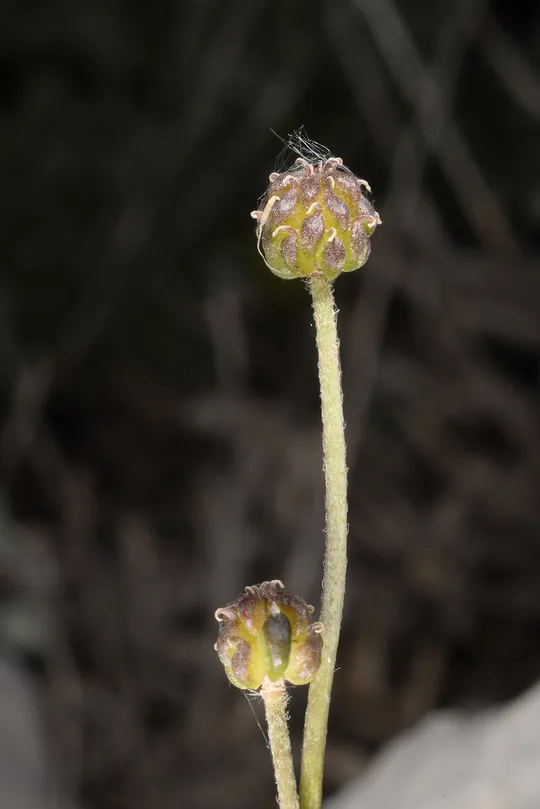Adder's-tongue Buttercup, Adder's-tongue Spearwort
Ranunculus ophioglossifolius
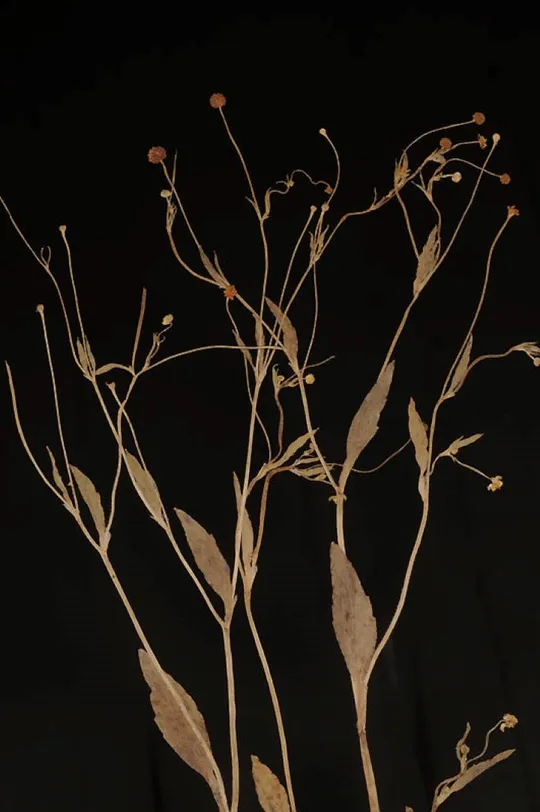
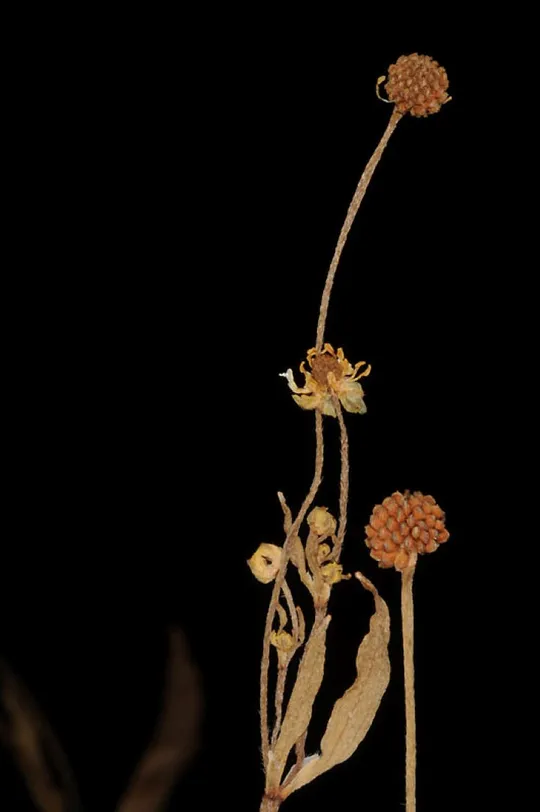
Ranunculus ophioglossifolius was collected three times during the 1920s and '30s, but has not
been found again, and is probably extinct. It was recorded in the Sharon from
Hadera and on the Pleshet Coast from Wadi Sorek and in the Hula Valley from the
Hula.
In Israel Ranunculus ophioglossifolius formerly grew
in wetlands. In Europe, it grows in seasonally flooded sites in humid depressions,
in canals and on moist, exposed soils.
The genus Ranunculus
comprises about 250 species, found mainly in the temperate areas of the
northern continents of the globe. Many of its species are associated with
wetlands and moist habitats. In Israel, there are 25 species of Ranunculus, particularly in the Mediterranean region, in diverse
habitats. R. asiaticus is prominent with
its striking large red flowers in scrubland and in open areas, but most of the species
have smaller yellow flowers. The species that grow in wetlands have
characteristically partially submersed shoots, with highly dissected filiform leaves.
Many of these species have white flowers – R. saniculifolius, R. sphaerospermus, R. trychophyllus and R. peltatus. R. ophioglossifolius also grows in marshy habitats, but
belongs to another section and has yellow flowers.
·
Ranunculus ophioglossifolius was extremely rare in Israel even before its extinction. The destruction
of marsh habitats probably led to its extinction.
·
Despite its extensive geographical
distribution in southern European countries it is classified as an endangered
species according to the IUCN in the following countries: England (EN), France
(VU), Italy (in several districts – VU, in others – EN), and Sweden (CR).
(www.plantlife.org.uk)
Ranunculus ophioglossifolius should be grown in botanical gardens from sources in adjacent Mediterranean
countries. Its biology and ecology should be studied to consider whether to
re-naturalize it in suitable habitats in nature reserves.
Ranunculus ophioglossifolius extends over Europe, mainly in
the southern countries: Spain, France, Italy, former Yugoslavia, Albania,
Bulgaria and Greece. It is also known from the Mediterranean islands: the
Balearic Islands, Corsica, Sardinia, Sicily and Crete. R. ophioglossifolius
is rare in the Low Countries and in Britain. It is also known
from the North African countries.
Ranunculus ophioglossifolius is an annual marsh plant that is extinct in Israel and was extremely
rare even before it became extinct. It has a relatively broad global
distribution, but is seriously endangered in several European
countries.
http:/www.arkive.org/adders-tongue-spearwort/ranunculus-ophioglossifolius/
http:/www.plantlife.org.uk/uk/assets/sng-species/sng-species-dossier/Ranunculus_ophioglossifolius_dossier.pdf
Current Occupancy Map
| 1000 squre meter pixel | 5000 squre meter pixel | 10000 squre meter pixel | |
|---|---|---|---|
| number of observations | 0 | 0 | 0 |
| in total pixels | 0 | 0 | 0 |
| Family | Ranunculaceae |
| Classification | On the endangered species list |
| Ecosystem | Mediterranean humid |
| Chorotype | Mediterranean - Irano-Turanian ( Euro – Siberian) |
| Conservation Site | Reintroduction to Agamon HaHula |
| Rarity |
1
4
6
|
|---|---|
| Vulnerability |
0
4
4
|
| Attractiveness |
0
0
4
|
| Endemism |
0
0
4
|
| Red number |
1
-1.0
10
|
| Peripherality | 0 |
| IUCN category | DD EW EX LC CR EN VU NT |
| Threat Definition according to the red book | Extinct |
 Based on:
Based on:
